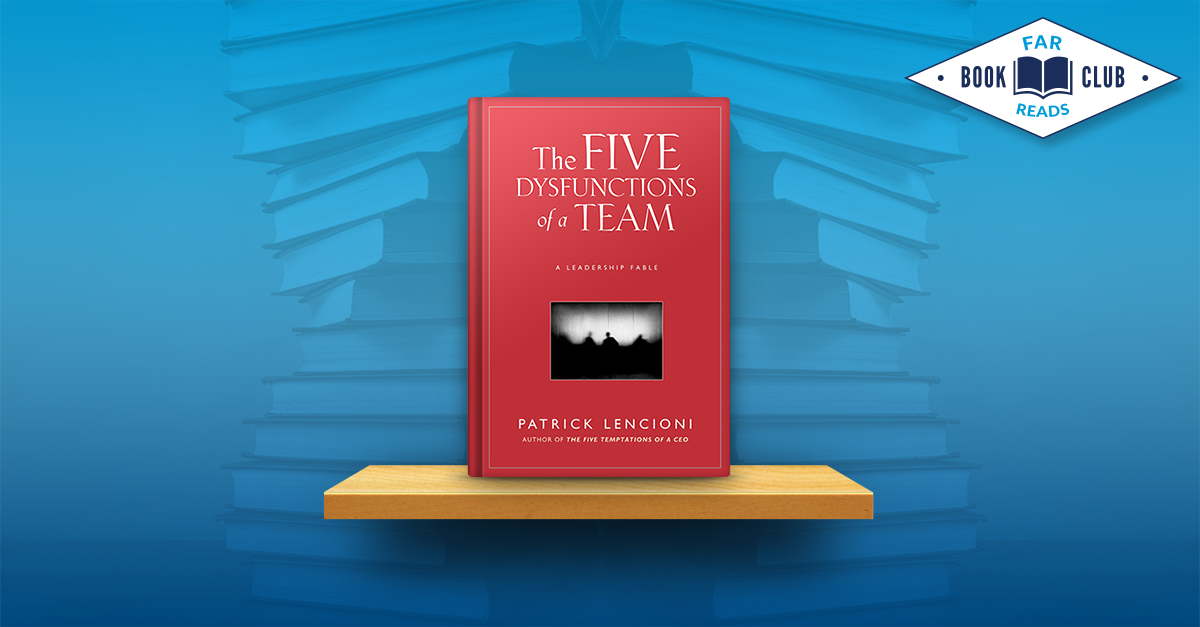
This month’s Far Reads book club pick was “The Five Dysfunctions of a Team: A Leadership Fable” by Patrick Lencioni. Here’s our recap.
Who Selected It
Kate Washut
Why She Selected It
“Working together effectively as a team is so important—and so difficult! Since we’ve started using scrum, and since teamwork is such a huge part of that process, I just felt understanding the characteristics of effective teams would be beneficial for all of us.”
What It’s About
“The Five Dysfunctions of a Team” is a leadership fable.
The story starts as DecisionTech hires a new, unconventional CEO to stop the company’s fall from grace.
The book jacket describes it best:
“Kathryn Peterson, DecisionTech’s CEO, faces the ultimate leadership crisis: uniting a team that is in such disarray that it threatens to bring down the entire company. Will she succeed? Will she be fired? Will the company fail?”
The five dysfunctions are revealed as we follow Kathryn’s first few months on the job:
- Absence of trust
- Fear of conflict
- Lack of commitment
- Avoidance of accountability
- Inattention to results
Lencioni then shares how you and your team can overcome these common hurdles and build a cohesive, effective team.
Our Favorite Quotes
In regard to lack of commitment and the failure to buy in to decisions:
“The point here is that most reasonable people don’t have to get their way in a discussion. They just need to be heard, and to know that their input was considered and responded to.”
“Members of great teams improve their relationships by holding one another accountable, thus demonstrating that they respect each other and have high expectations for one another’s performance.”
How We’re Applying What We Learned
The author said:
“Not finance. Not strategy. Not technology. It is teamwork that remains the ultimate competitive advantage, both because it is so powerful and so rare.”
We agree. So much so that continuing to improve team dynamics is a company goal for 2016.
Our first step toward that goal? Taking personality tests to better learn who each of us is and how we can work better together.